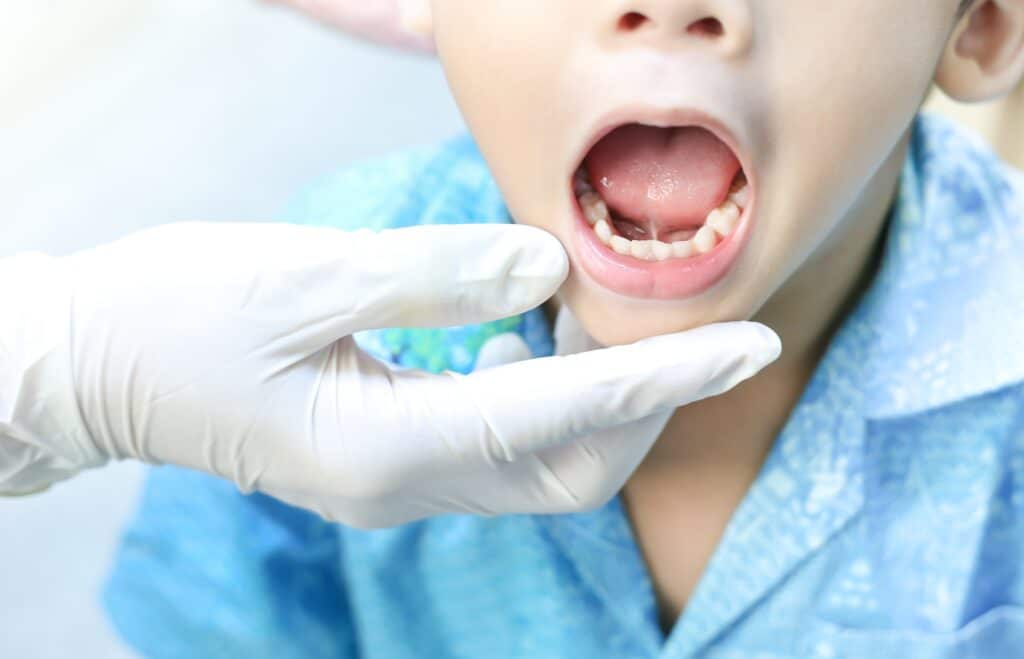It’s been said that the eyes are the window to the soul, but have you ever heard that the tongue is a mirror of your health? The muscular organ, so essential for tasting and speaking, can actually provide clues about your overall health and well-being. By paying close attention to the details of your tongue, from the shape and the color to the texture, it’s possible to pick up on the clues your body is relaying about your health.
In this article, we’ll be taking a glance at the anatomy of the tongue and its various functions while exploring the connection between the tongue and overall bodily health. Finally, we’ll provide a few tips on how to maintain a healthy tongue.
Anatomy of the Tongue
The tongue is a muscular organ covered with moist tissue called mucosa. The ridges on the tongue, called papillae, give the organ its rough texture, while thousands of tiny taste buds cover the papillae.
As a whole, the tongue is made up of five interconnected parts that include the tip, base, body, extrinsic muscles, and intrinsic muscles. Its four main functions are: tasting, chewing, swallowing, and speech/sound formation.
What Your Tongue Says About Your Health
Because the tongue is connected to many other important organs, changes to the shape, size, or color of the tongue can, in some instances, be an indicator of a variety of different health issues, many of which can be tied to lifestyle factors. Smoking, for instance, can negatively affect the appearance of your tongue, giving a clue as to the underlying health problems.
Here’s a closer look at how different tongue problems may present, and what it might say about your overall physical health:
Healthy Tongue vs. Unhealthy Tongue
The Color of Your Tongue
A healthy tongue will range on the color spectrum from red to pale pink, with most all shades in between considered perfectly healthy and normal. When the shade falls outside your typical normal tongue appearance, however, it could be an indication of different issues or deficiencies in your health.
-
- Dark Red to Deep Purple – A darkening of your tongue’s standard color could be an indication of something as simple as a vitamin deficiency or a sign that your body is fighting off a serious infection like Scarlet fever or Kawasaki disease.
-
- Blue – If your tongue turns from purple to blue, it might be that your body is experiencing depleted oxygen circulation, often due to some type of lung problem.
-
- Black – On the rare occasion your tongue turns black, certain medications, antibiotics in particular, are often the cause.
-
- Yellow – Your tongue may take on a yellowish hue due to a buildup of bacteria commonly attributed to tobacco, alcohol, and coffee consumption, poor oral health habits, or even excessive dry mouth.
-
- White – A pale white coloring of the tongue could be a sign of a yeast infection known as oral thrush, and also possibly an indication that your immune system is weakened.
The Shape & Texture of Your Tongue
Similar to tongue color, the shape and texture may be different at times. However, reach out to a health professional if the following persist:
-
- Painful Bumps or Ulcers – Smoking, canker sores, oral cancer, or simply biting your tongue can be the cause of bumps and ulcers.
-
- Scalloped Edges or Teeth Marks – It’s typical to have ridges on the tongue, but scalloped edges or teeth marks might be a sign of TMJ or teeth grinding.
-
- White or Red Lesions – Lesions on the tongue, whether red or white, are often benign and resolve on their own, but in some cases, they can be a warning sign of tongue cancer.
-
- Thin Tongue – Typically, dehydration is the leading cause in the instance that your tongue becomes very thin.
The Coating of Your Tongue
When it comes to the mucous coating on your tongue, there are several deviations from the normal tongue appearance that you’ll want to keep an eye on:
-
- Yellowish – Indication of possible infection
-
- Gray or Blackish – Can be a sign of a long-term digestive disorder
-
- Thick White – Attributed to poor circulation or potentially a yeast infection
-
- Extra Thick – May mean poor overall intestinal health or digestive issues
Bad Oral Hygiene | Tongue Maintenance
There are several things you can do to maintain a healthy tongue, most of which revolve around eliminating bad oral hygiene habits. This includes:
-
- Brushing and Flossing Regularly
-
- Utilizing a Tongue Scraper
-
- Rinsing with Antibacterial Mouthwash
-
- Drink Green Tea
-
- Regular Monitoring of Color/Shape/Texture
-
- Consume Plenty of Water
As you can see, there are a number of different ways that the appearance of your tongue is a good gauge of your overall health. By regularly monitoring your tongue’s shape, color, and texture, you can read the clues your body is relaying, and hopefully, you’ll catch potential issues before they become more serious.
In order to maintain good tongue health, it’s important to incorporate as many good oral health habits into your daily practice as possible, and that includes visiting the dentist twice a year for a regular checkup.At Inspire Dental Wellness, our experienced staff will check your mouth and tongue for any potential problems during your comprehensive dental evaluation. Reach out to schedule a consultation today!
Service- Organization –

